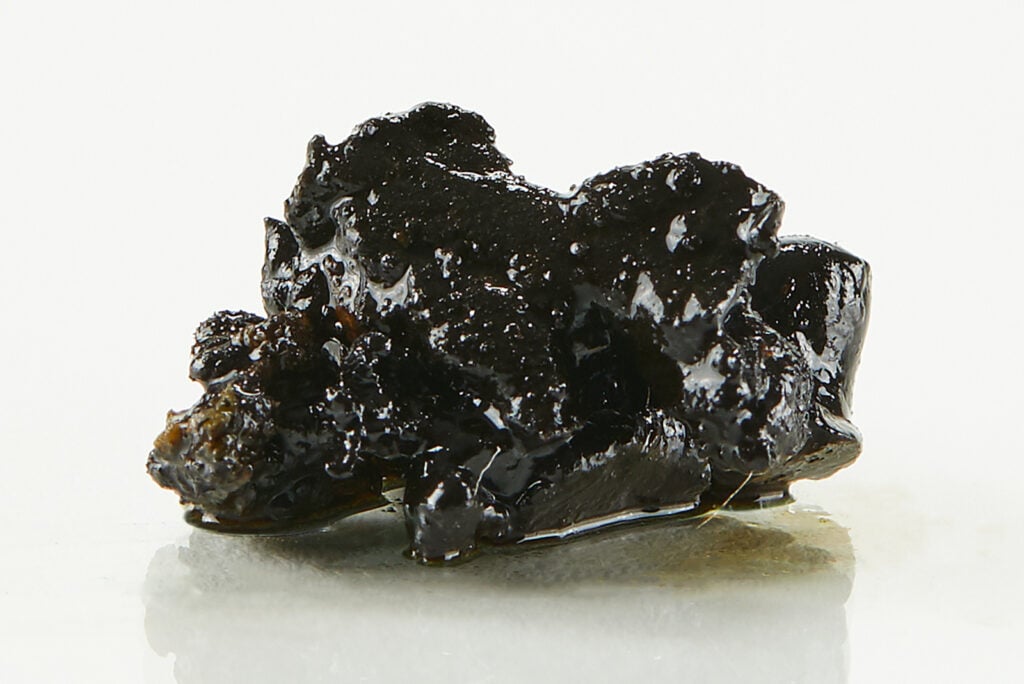Did you know that Kratom resin is one type of extract that many companies do not sell?
Whether you’re new to Kratom or you’ve enjoyed it before, there’s a good chance that you aren’t familiar with Kratom resin. Unlike more popular items like powder and extract, Kratom resin is not seen as frequently on the market.
There are various reasons for that, and understanding those reasons can start from understanding the different types of Kratom and how resin stands out from those.
Types of Kratom Products
Kratom comes in many forms, and some of those forms have become very popular. There are a few specific products that can typically be found on the market from reliable Kratom vendors:
These are the most common ways you’ll find Kratom on the market. One of those ways, Kratom resin, is what we are looking at today. Kratom resin can be most closely compared to extract or concentrate, but it has some major differences worth taking notice of.
Kratom Resin: Explained
Kratom resin is a type of extract, so let’s start by learning more about what extracts are.
Kratom extract is a more concentrated version of Kratom powder. Kratom powder goes through an extraction process, and the final product can be a powder, a liquid, or a solid. Kratom resin is the solid version.
Unlike most other types of Kratom, resin has a very unique look. It is a dense, slightly sticky solid that reminds some people of hardened honey or even tar in appearance. This is incredibly different from the leaves, liquids, and powders that most Kratom consumers are familiar with.
Kratom resin is a solidified extract, and it is much more concentrated than other extract forms. The color is usually dark brown due to the thickly condensed plant matter inside of the resin. The texture is somewhat like glass: it can be broken into smaller pieces or ground into a powder.
How Kratom Resin Is Made
How exactly does this super-concentrated solid extract come to be?
Basic Kratom extracts are all achieved in the same way. The whole leaves or powdered leaves are put through either an alcohol-based extraction method or through a process of boiling, evaporating, and cooling. By adding citric acid during the process, the solution gets more and more concentrated with each extraction.
Kratom resin is the most extreme version of this extraction. The solution is heavily evaporated and then allowed to harden into the hard resin blocks that Kratom fans are familiar with. By shattering the blocks or sheets into smaller pieces, Kratom resin is prepared for consumption.
Taking Kratom Resin
Some people are interested in trying Kratom resin because it is often less time-consuming to take than other popular delivery methods.
Hard chunks of Kratom resin can be easily mixed into a hot beverage like coffee, milk, or herbal teas. The resin melts down into the drink, and no time needs to be taken to separate the plant matter because that has already been done.
Some try using Kratom resin directly, swallowing it like a pill, or grinding up the resin to add it to empty capsules. This easy consumption method is a very direct way of consuming Kratom.
At-Home Kratom Resin
Many interested in trying Kratom resin cannot find it from a reliable vendor, so they choose to try to make it themselves at home. It is possible to make your own resin, but you need to keep your safety in mind if doing so.
The process is relatively simple. By boiling Kratom, allowing the solution to steep for a long time, freezing the solution, and then thawing it in hot water, you can filter out the plant matter and leave behind a highly concentrated tea. This tea is then spread out and allowed to evaporate and harden into Kratom resin. While time-consuming, a lot of resin is produced at one time.
The big issue with making Kratom resin at home is that you do not know exactly what concentration you will have created. Kratom resin is typically labeled based on the number of grams that were reduced to one gram (i.e., and 8x resin used 8 grams to create 1 gram of Kratom resin), but this is still not a perfect measurement.
Important Safety Concerns
Searching Kratom resin online, you’re likely to see many mixed concerns about whether or not it’s a good idea to use this super extract.
Tolerance Risk
One reason that taking Kratom resin in large amounts or too frequently can be an issue is due to tolerance. Kratom tolerance can develop in the right conditions, and Kratom resin creates the perfect storm.
After using resin frequently, Kratom powder and other delivery methods may no longer be effective since resin concentration is so much higher. Keeping to your normal schedule is important even as you alter the delivery method. Kratom resin is recommended in moderation when it is used, and, as with all Kratom products, it’s best to start low and go slow.
Concentration Problems
Another concern about resin is that the concentration is not always clear, so it can be hard to choose the right product or the right amount. The extraction process is more extensive and varied than other Kratom types, leading to a lot of variation in the final product. For this reason, many reliable vendors do not make or carry resin products. At Kraken, our extracts are lab-formulated and standardized to ensure a consistent product from batch to batch.
Responsible Kratom Information
The best way to ensure that you are enjoying any plant-based substance safely is to learn more about it. We keep our resources up-to-date with the latest research and coverage about Kratom. Check our blog frequently to continue learning about Kratom and feel free to contact us anytime! We love being a part of this community and we take our jobs seriously!
